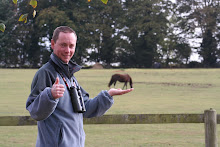One of the 'joys' of working on a site that has visitors is that most of them know how to run it better than you. Those years of experience working on their own nature reserve gives them the knowledge base to comment on your reserve management.
Obviously, I am jesting. There is nothing more depressing than spending many many hours devising a management plan and then implementing it for someone to walk down the path and off the cuff say 'the water levels are too high/low' or 'there are no birds here'. WTF do they want!
Despite all this, we still strive to make the reserve the best it can be for birds and this year we have had great success. OK, we may not have the rares of Frampton or Cley but that has as much to do with the lack of birders rather than birds. There are very few people on the reserve after 5 which is great as I have the place virtually to myself but I can't be there every night.
I don't think you can grumble with peaks of 59 curlew sandpiper, 5 little stint, 500+ black tailed godwit, 20 spotted redshank, 16 greenshank, 452 avocet, 420 dunlin, 150 ruff and finally a pec sand in recent days!
The whole idea of the fresh marsh management is to produce ideal conditions for the birds but also to ensure a visitor spectacle and during the autumn, that spectacle is close views of waders. By managing that water levels we can create the perfect feeding conditions in front of the hides and by the paths. Lots of people have said that the birds won't come close to the hides but that is rubbish. These black tailed godwits were feeding in front of Parrinder Hide with at least 30 people in it. The reason they were there is that we had dropped the water levels and they were taking advantage of a new food source.


The great thing about Mother Nature is she gives you a helping hand with your management at this time of year. The water in the fresh marsh during the autumn is very shallow, probably only 50cm deep max, so the weather conditions can have a significant affect on the levels. If we get strong winds, that can push the water around the lagoon creating new areas of mud that may not have been there earlier in the day. This affect opens up new feeding areas and the birds come in.
Areas like this are excellent for waders as the food is easily accessible and the birds give great views.

Curlew sandpipers showing very well from the Island Hide over the last few weeks. It is a bit odd that all the birders and photographers who didn't like the hide when it was built have suddenly been filling it. I wonder why...?
Time to end the rant I suppose, so here are some nice birds which is what its all about ;-)


























































